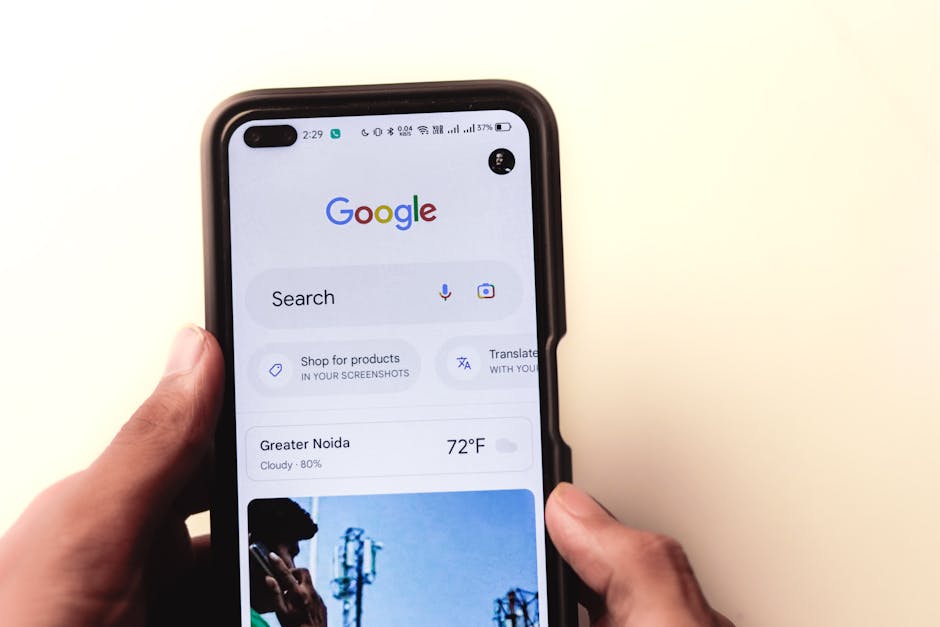If you’ve ever asked Siri where to eat or told Google to “find a plumber near me,” you already understand how important voice search has become.
As a freelance web consultant, I’ve seen the shift firsthand—local customers are searching by voice more than ever, and they expect fast, clear, and specific answers. Whether it’s a parent asking Alexa for the nearest dance studio or a driver using voice search to find an open dentist in traffic, people want results right now—and usually from a business that’s close by.
Here’s how I help local business websites get voice-ready—step by step.

Step 1: Start with Local SEO Basics (It’s Not Just Google)
Voice search relies heavily on accurate local data. If your name, hours, or phone number are outdated or inconsistent across platforms, assistants like Siri and Alexa are going to skip right over you.
What I do for clients:
-
Claim and clean up your Google Business Profile. I make sure everything—from your business name to your hours—is letter-for-letter consistent with your website.
-
Update Apple Maps and Bing. Most folks forget that Siri uses Apple Maps and Alexa often pulls from Yelp and Bing. I make sure you’re covered there too.
-
Tighten up directory listings. Yelp, Facebook, and niche directories still matter for voice results. I either clean these up or show you how to manage them moving forward.
-
Prompt more reviews. Voice assistants love businesses with active, recent, and authentic reviews. I help clients build simple systems to get more of them—often just by tweaking a thank-you email.

Step 2: Speed Up Your Site (Because Voice Search Is Impatient)
Voice assistants want results instantly. If your site loads slow, you’re out.
Here’s what I look for on every local site I optimize:
-
Image compression: I run your images through tools like TinyPNG so they load fast on mobile, even over data connections.
-
Leaner code: If your WordPress site is bloated, I use tools like Asset Cleanup to remove unused scripts and styles.
-
Mobile-first design: I test your site on actual phones—not just simulators—to make sure the key info (services, contact, hours) is clear and accessible.
-
Real-world performance: I don’t just check Lighthouse scores—I walk through the site like a customer would, using 4G or LTE.
Because if your site isn’t fast on mobile, voice search won’t even give it a chance.

Step 3: Write Like People Talk
-
One big shift with voice search is tone: people speak differently than they type. Instead of “dentist Montebello,” they’ll say, “Who’s the best dentist near Montebello that takes walk-ins?”
That’s why I help clients rework their content to match spoken queries:
-
Add natural, question-based headings like “Do you offer emergency plumbing services?” or “Are you open on Sundays?”
-
Build out an FAQ page (or section) where every question gets a clear, 1–2 sentence answer. That’s the kind of content voice assistants love to read out loud.
-
Use real customer language. I’ll often pull phrasing directly from reviews or client calls—it’s what people actually search for.
-
Include local context. Mention neighborhoods, landmarks, or nearby cities. “Serving Montebello, Pico Rivera, and surrounding areas” might be the detail that makes your listing pop.
-

Step 4: Aim for Featured Snippets (a.k.a. Position Zero)
If you’ve ever seen that answer box at the top of a Google search—that’s where most voice results come from. And getting there is doable with the right structure.
Here’s what I implement:
-
Direct questions as H2s (e.g., “How long does carpet cleaning take?”)
-
Short, direct answers underneath (voice assistants prefer concise, clear language—about 40–50 words tops)
-
Schema markup to give Google more context. I often add LocalBusiness, FAQ, and Q&A schema where it makes sense.
-
Ongoing updates. I monitor what content earns snippets and keep it fresh to maintain your spot.
If this part sounds too technical, don’t worry—I handle it for my clients, or I’ll walk you through it step by step.
Step 5: Make Your Site More Local Than the Big Guys
Voice search is hyperlocal by default. That’s your edge as a small business—you’re in the neighborhood. Now you just need to show it.
What I recommend and help implement:
-
Create service area pages like “HVAC Services in Montebello” or “Best Electrician in Rosemead.”
-
Mention local landmarks: “Right off Whittier Blvd, next to the Montebello Library.”
-
Embed a Google Map and write directions (“Say: Take Garfield Ave to Beverly Blvd and turn left on 6th Street”).
-
Get local backlinks from chambers of commerce, neighborhood blogs, or partnerships. Even one or two relevant local links help voice search understand where you operate.

Final Thought: Voice Search Isn’t the Future—It’s Now
This isn’t something to put off. People are already using voice search to find businesses like yours every day. And the good news? You don’t need a huge budget or complex strategy to show up.
You just need:
-
Clean, consistent listings
-
A fast, mobile-friendly site
-
Conversational content with clear answers
-
Smart use of schema and structure
-
Local context baked into your pages
If that sounds like a lot to take on, you’re not alone. I work with small business owners and agency partners all the time to make this stuff manageable—and profitable.
If you’re ready to show up when someone says, “Hey Google, who’s the best [your service] near me?”—let’s chat. Voice search is already happening. Let’s make sure your business is part of the conversation.

